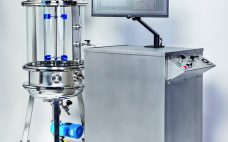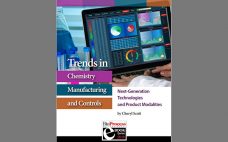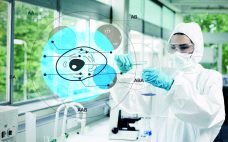In recent years the biopharmaceutical industry has significantly increased the demands it makes on bioreactor systems. Efficient and reproducible production of active pharmaceuticals of high quality and in large quantities is of highest priority. However, bioprocessing is a complex topic. Numerous factors affect growth of cells in culture but are difficult to determine and interpret reliably. One of the most relevant performance parameters is the volumetric mass transfer coefficient (kLa). It describes the efficiency of gas transfer (e.g., oxygen) from…
2018
Ask the Expert on Ceramic Hydroxyapatite Chromatography Media: How to Start
Bio-Rad’s CHT Ceramic Hydroxyapatite XT (CHT XT) calcium-affinity cation-exchange chromatography medium is used for purifying numerous types of biomolecules, with single-step clearance of impurities and aggregates in monoclonal antibody (MAb) purification. This is an easy-to-use mixed-mode medium, which is both ligand and support matrix in one. In an “Ask the Expert” webinar on 18 July 2018, Mark Snyder (manager of the process chromatography R&D applications group at Bio-Rad Laboratories) discussed its application and use at process scale, providing guidelines on…
Ask the Expert: Key Considerations for Advanced Therapies Manufacturing
On 12 September 2018, Thomas Page, PhD (vice president of engineering and asset development at Fujifilm Diosynth Biotechnologies, FDB) shared a brief overview of challenges encountered in manufacturing of advanced biotherapeutics. Page’s Presentation FDB is a contract and development manufacturing organization (CDMO) that uses microbial and mammalian cell lines to produce protein therapeutics as well as viral vaccines and gene therapies. The company’s Center of Excellence for Advance Therapies Manufacturing is located in Texas. FDB set out some years ago…
Ask the Expert: Bioproduction Efficiencies Gained Using ExpiCHO Stable Production Medium
The transition from transient to stable production workflow with Chinese hamster ovary (CHO) cells requires a change in culture medium. On 22 August 2018, Shreya Lowmaster (field applications scientist at Thermo Fisher Scientific) discussed transient to stable solutions for moving from research to commercial production. Lowmaster’s Presentation Researchers are demanding higher titers in transient systems, and many people use CHO systems as an alternative to HEK293 cells. The Thermo Fisher Gibco ExpiCHO Expression System kit was developed for transient expressing…
Computational Science Changes Biolaboratory Design
Until relatively recently, life-science research was characterized by test tubes, Petri dishes, and centrifuges. Now, as with many industries, the life sciences are undergoing a digital transformation. Computational science is changing laboratory design. The healthcare industries always have generated large amounts of data. What has changed is the available information technology. With the growth of cloud computing, large data sets — and the high-speed tools for analyzing them — are available increasingly to a degree not possible with traditional servers…
Single-Use Sensors and Control and Data Acquisition Tools to Streamline Bioprocess Development
Process development and biomanufacturing in the biopharmaceutical industry have evolved extensively over the past 10 years. More tools are available to study process variables to enable more efficient and productive processes, speed development, and reduce costs. High powered microcontrollers are embedded in laboratory devices to carry out complex tasks. Recently, users have started working with microcontrollers such as Raspberry Pi for personal projects. As personal computer power has accelerated multiplefold,leading to high processing power and compact, high-capacity memory readily available…
Cell Culture Media: An Active Pharmaceutical Ingredient or Ancillary Material?
Cell-based therapies are used to treat diseases that require the replacement of diseased, dysfunctional, and injured cells (1). To produce these therapies, a wide range of reagents and materials such as antibodies, growth factors, and enzymes are used in their manufacturing processes. Such necessary materials are administered through a cell culture medium. Active pharmaceutical ingredients (APIs) are the main ingredients that make products therapeutic. Ancillary materials (AMs) and raw materials (RMs) are essential components used during production but are not…
Trends in Chemistry, Manufacturing, and Controls: Next-Generation Technologies and Product Modalities
New technologies bring new regulatory challenges. The biopharmaceutical industry must be cautious in its implementation of new scientific ideas and technology platforms — no matter how promising those might be. Regulators will look skeptically on any claim that isn’t backed up by good data, and with no solid history of successful use to build on, a company must have all the answers itself. How do compliance professionals anticipate what kinds of questions reviewers will ask when the time comes —…
Science Guiding Technology: Cell Line Development and Engineering 2018
Cell line development engineers in the biopharmaceutical industry juggle several, sometimes contradictory priorities. They must present their bioprocessing colleagues with a master cell line that can express a reproducibly high-quality protein product at titers and growth concentrations that will be high enough for manufacturing efficiency — and without those parameters degrading over time. Performing the first step in every bioprocess, these scientists must consider their own budgetary concerns and efficiencies while facing regulatory scrutiny under the 21st-century risk-management paradigm. In…
Myths, Risks, and Best Practices: Production Cell Line Development and Control of Product Consistency During Cell Cultivation
Health authorities are requesting substantial details from sponsors regarding practices used to generate production cell lines for recombinant DNA–(rDNA) derived biopharmaceuticals. Authorities also are asking for information about the clonality of master cell banks (MCBs) and control strategies to minimize genetic heterogeneity. Such requests are prompted by recent reports indicating “nonclonality” for certain production cell lines. To address these and related issues, the CASSS CMC Strategy Forum on “Production Cell Line Development and Control of Product Consistency During Cell Cultivation:…






